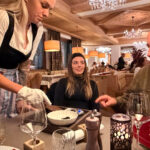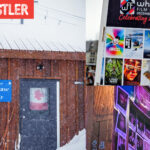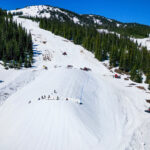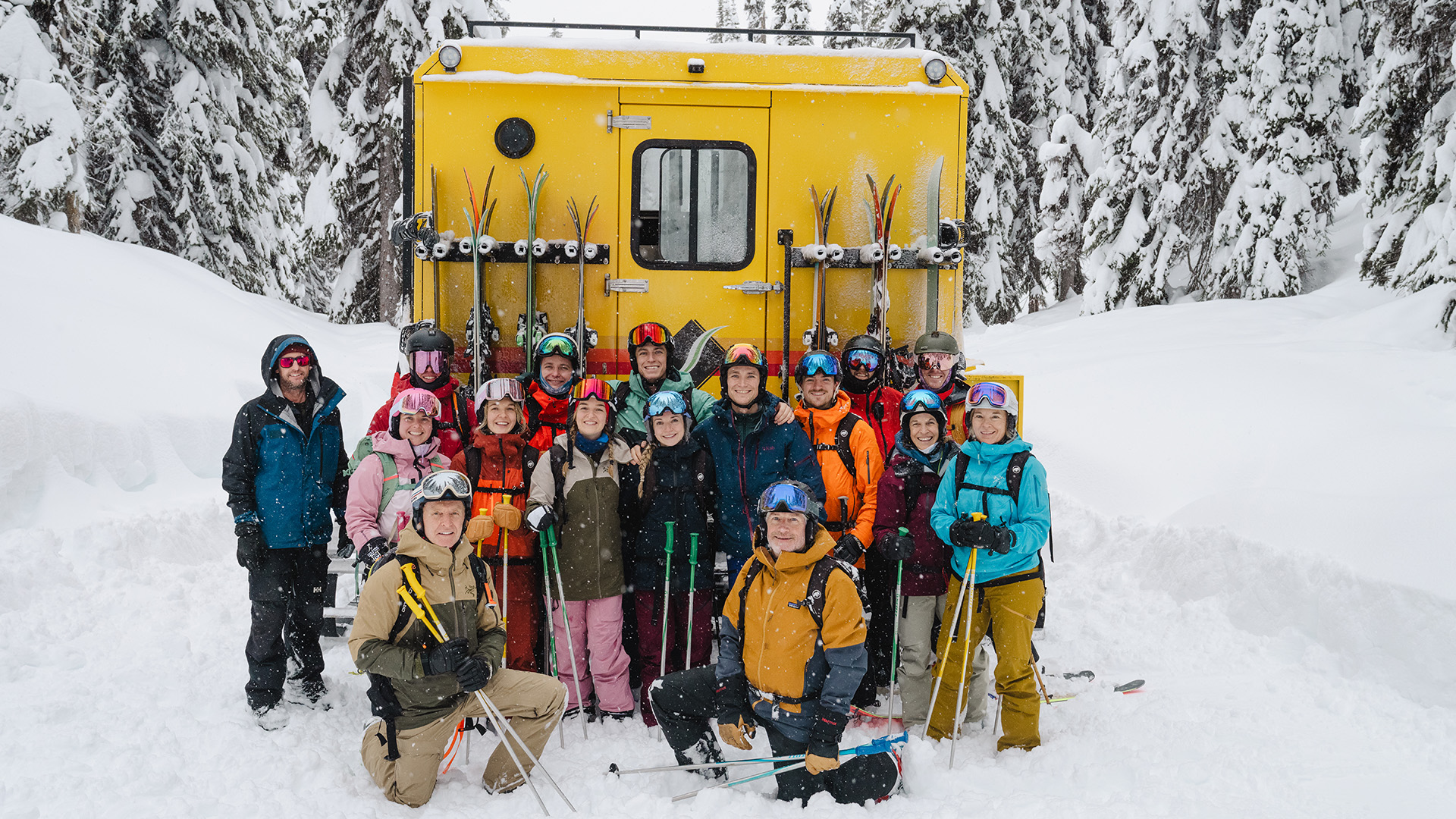
The Origins of Cat Skiing in British Columbia
I’ve heard the line many times from starry-eyed skiers: “You must have the best job in the world!”
I’m not talking about working for Ski Canada, although looking back, this gig has been pretty good. I’m thinking of the comment that my grade 13 buddy, Paul Osak, gets regularly. Not wanting to kill the dream with the harsh realities of running an off-grid luxury mountain lodge, Osak plays along as if his only responsibilities are to measure snow depth, test powder lightness, and hold après-ski court at Selkirk Snowcat Skiing, tucked into B.C.’s deep Selkirk Mountains.
Paul and his wife Megan (the real brains, by his own admission) bought the world’s first-ever cat-skiing operation in 2013 from original co-owner Brenda Drury. Her husband Allan literally invented the concept of skiing from a snowcat half a century ago. Fifty years of snowcat skiing—a milestone worth celebrating.
How Cat Skiing Was Born
The boy from snowy Barrie, Ontario, Allan Drury, had a storied sports history: hotdogging with the legendary McConkeys, teaching skiing in Aspen, and pioneering heli-ski lines with CMH’s Hans Gmoser.
Legend has it the idea came while watching groomers tow skiers by rope. A geologist used to bush work, Drury had the foresight to add a passenger cab to the back of a snowcat and bump his way into the alpine on old logging roads. He even collaborated with Bombardier to make it happen.
By 1975, Allan and Brenda had settled on the Selkirk Mountains of British Columbia. From a modest farmhouse in Meadow Creek, north of Nelson, they launched what would become the epicentre of backcountry skiing innovation.
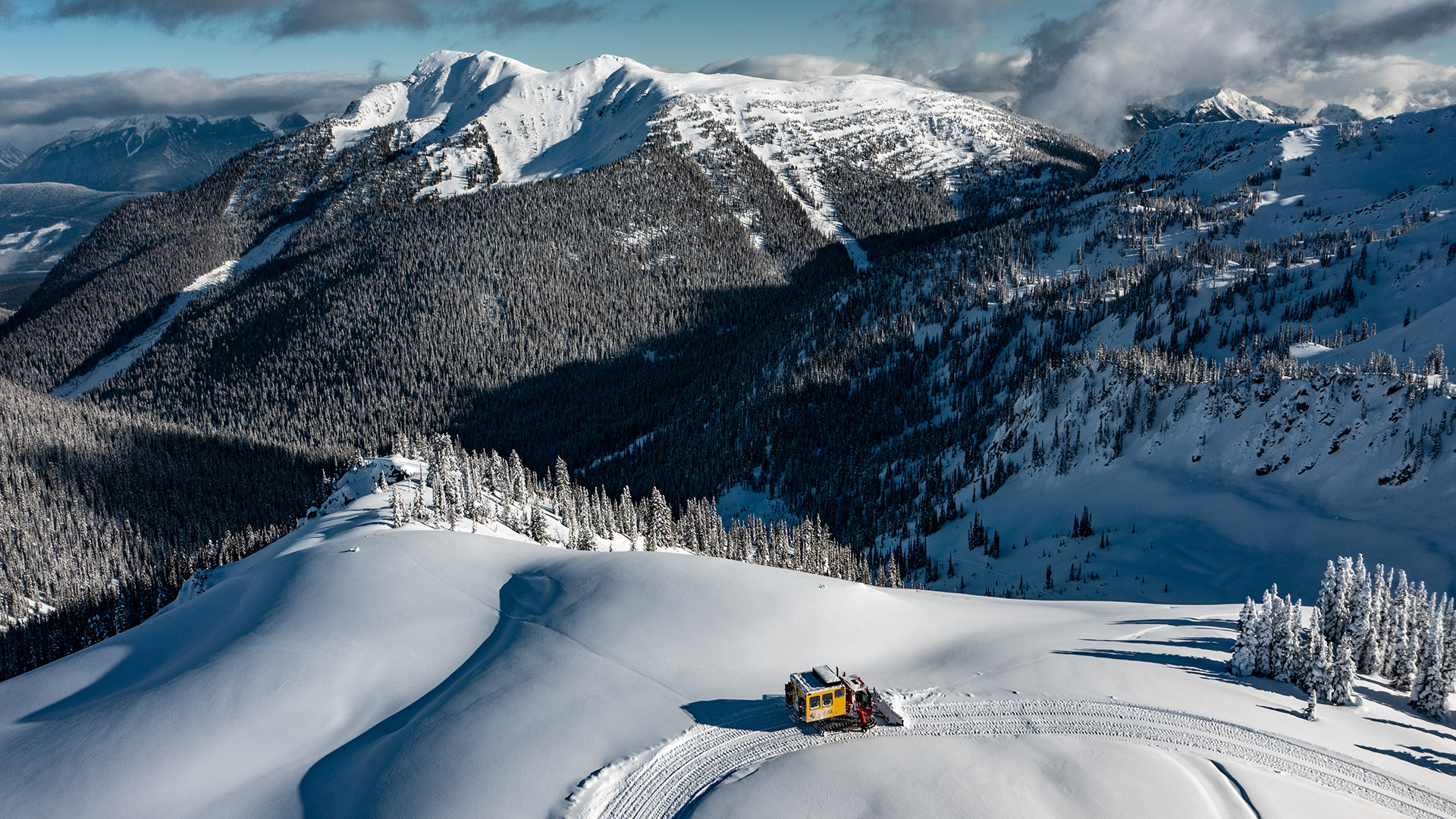
Selkirk Snowcat Skiing: Powder Paradise
Today, Selkirk’s tenure covers nearly 50 square kilometres—roughly the size of Whistler, Blackcomb, and Lake Louise combined, but shared by just 24 guests. Add lodge comforts and a loyal team (many staff have been there for decades), and it’s easy to see why 90 percent of guests return every year.
This is cat skiing in its purest form: intimate groups, legendary terrain, and consistent deep powder in the B.C. Interior.
A Family Christmas in the Selkirks
Fifty years after Allan Drury first invited skiers into a snowcat, I convinced Bill Macdonald—a university classmate and tele-skier with three boys close in age to my three daughters—to spend the kids’ inheritance on a holiday. Together with his wife Karen, they joined the Osaks, their kids, and ours for what became the best Christmas ever.
Where many snowcat or heli groups skew toward 40- to 60-somethings, our average age was a noisy 20-something. Lead guide Adam rode quietly up front with driver Jeff while tail guide Liam (the Osaks’ son) tolerated Austrian après-ski tunes and Abba thumping through the cab speakers. Between the noise? Lap after lap of deep powder tree skiing.
Powder Days, Lodge Nights
The snow was perfect: light, dry B.C. Interior powder, anywhere from knee-deep to chest-deep. Despite professional photographers Steve and Lindsay capturing plenty of magic, they somehow missed second-born Luke’s backflip-to-faceplant that earned the evening’s “double ejection” award at dinner.
Secret Santa brought hilarity—an emergency underwear dispenser, a leather teacup, a boyfriend pillow. Evenings turned to charades and board games by the fire instead of phones. Guide Adam delivered the next morning’s safety briefing entirely in hand signals. Lodge life was refreshingly analog.
Misadventures Include
I only hit the shot-ski once over Christmas, penalized for crossing the guide’s low line. (In my defence, Liam spends half his time airborne, so technically I never crossed his tracks.) I also may have led my new son-in-law Benjamin, on his snowboard, below the pick-up line—a brutal 15-minute slog uphill in bottomless Selkirk powder.
Still, guide Adam managed to deliver us all to the start of Home Run at exactly 3:15 p.m. to catch the solstice light. Unlike some cat operations, Selkirk guests ski down to the lodge—only the tired download. The rest race, whooping and hollering, straight into après.
The Legacy of Cat Skiing
On our last descent of Home Run, I thought of Allan Drury. Fifty years ago, he built a passenger cab for a snowcat and unknowingly launched what is now a $200-million-a-year industry with waiting lists across British Columbia.
Would he have had any idea what he was starting? Probably not. But every turn in Selkirk’s powder is proof of his vision.
Change of guard: as Ski Canada went to press in late January, Colliers commercial real estate began taking offers to purchase Selkirk Snowcat Skiing. More to come at skicanadamag.com.

